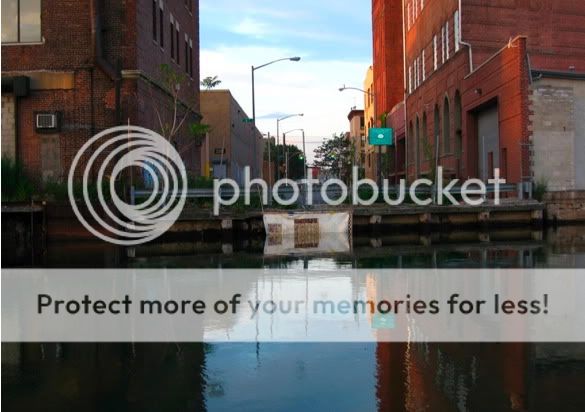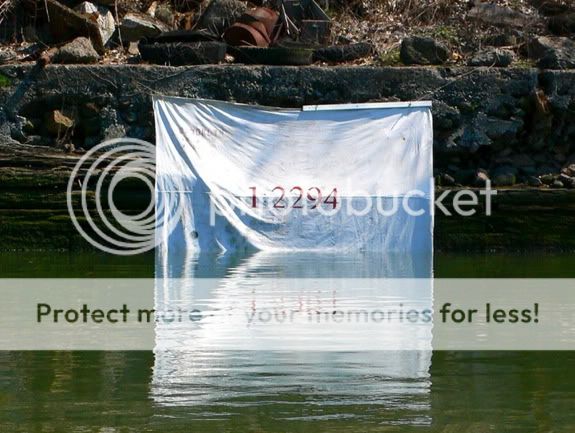
image from Kevin T. Allen's Phonoscope Gowanus
It appears that the fabled "Lavender Lake" of Brooklyn could be about to start a new chapter in its exceptionally polluted life. Last week the EPA proposed to make the Gowanus Canal a Superfund site. Even though the Canal has been highly contaminated by industrial waste and pollution for 150 years or so, the news of possible reclamation came as a surprise.
Urban legends run thick around this two-mile long body of water. Its storied history includes a crucial role in George Washington's triumph in the Battle of Brooklyn in 1776. Yet, like most New York icons, the Canal has an abundance of former lives.
One result is that the Canal is too contaminated to support any form of life. The oxygen levels within the Canal currently test at around 1.5 parts per million (4 parts per million are needed to sustain life). While writing this, I reflect on the fact that the canal runs through Brooklyn only two blocks from where I live. It's odd how much psychological distance this actually equates in an urban environment. Though the Canal technically passes through the ever flexible borders of Carroll Gardens, South Brooklyn and Red Hook, rather than a vibrant ecotone you might say it actually constitutes an anti ecotone-- a stark division between the industrial and residential thoroughfares of Second and Fourth Avenues that is seemingly avoided or sped past by everyone except local artists.
Kevin T. Allen has been canoeing up and down the Canal for several years producing extremely high-quality sound recordings. His resulting works have been exhibited both locally and internationally. For his Gowanus projects he has held microphones right to its surface, and even plumbed its shadowy depths with a specially designed hydrophone (inexplicably picking up Polish radio frequencies in the process). His byline for GOWANUS: Over/Under-Water, says: "A first person journey above and below one of America’s most polluted waterways." Yet, Kevin hasn't made his engagement with the Canal a public activist project. He has often been the only one "out there". It has been a purely exploratory, aesthetic, and local practice. Instead of producing pieces that aspire for the Canal to be other than what it is, Kevin has come to it as it is -over and over again.
His work makes me think that meeting (any of our planet's many) ecologically challenged spaces as they are, and creatively engaging them "there" as such, might be one of the most inventive contemporary art practices that can presently be taken up. By developing a relationship with the Canal, and through that process rendering it aesthetic, Kevin generates space for this site to become something else in the future - a future that is now arriving. With the call for reclamation the area is potentially open to being newly populated and enjoyed by many forms of life.

Project for Calendar Studies, David Eustace
Other artists also have contributed to the culmination of this moment. Last summer David Eustace made several paintings "with" the Canal by submerging large pieces of canvas for extended periods of time. They were incrementally stained and marked over time by the Canal's industrial pigments and particles of mysterious origin. Deborah Loxam-Kohl, a critic-curator writing about David's project, wrote, "A recent exhibition of Project for Calendar Studies in Brooklyn had him leading boat tours of the canal, visiting the site where canvases are strapped to pilings and submerged beneath the murky waters. Introduced to the work in these surroundings, many viewers tend to interpret it within the context of environmental issues. Without intending to comment on the ecological state of the Gowanus Canal, or to draw general attention to industrial contamination of the environmental, the work, nevertheless, captures the viewer’s imagination. Eustace recognizes the inclination to align the work with political and social concerns associated with the environment, and understandably, it’s a natural response to the dark watermarks and sooty shadows of the canvases when one understands what created them. Though the work raises issues that weren’t a factor in its formation, Eustace supports a dialogue that enables people to address the matters the work brings up for them."

There is the familiar tale of urban artists taking up the derelict, remote, gritty fringes of the city and rendering them more livable and often more interesting than they were once considered to be. In a time of growing tension about the earth's ecology, it is interesting to see artists move indirectly in response to the contaminated landscapes (and seascapes) so readily available. Instead of confronting them directly as subject of environmental art, some artists, more interestingly, create dynamic images and sensations of these spaces as they currently exist. They create signals in response to these sites as they are, and in the case of the Gowanus Canal, they have perhaps assisted in materializing the necessity of transformation through a means that is less overtly political.
I would like to think that it is work of artists such as Kevin and David, and the efforts of local institutions such as Proteus Gowanus and Gowanus Dredgers, that have helped to usher in an interest and a reason to turn towards what lies in the backyard of many but has been overlooked for so long.
The 60 day Public Comment Process to determine if the site will become a Superfund Site is underway. Visit the EPA website for the Gowanus Canal and add your thoughts.
Read an article in the Times about the proposed EPA intervention.





No comments:
Post a Comment
Note: Only a member of this blog may post a comment.